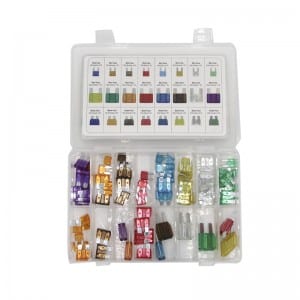Major players like Materialise, Stratasys, Carbon, Autodesk and TRUMPF are all here showing new materials, software and machines, building on much of what we saw at Formnext in November last year. There are Markforged 3D printers on at least four stands, whilst its main stand remains one of the busiest in the hall. Then there are the big Japanese companies, including machine tool manufacturers like DMG Mori which has brought along its new LASERTEC 30 SLM 2nd Generation machine, and printing giant Mimaki, which introduced its "10 million" colours 3D printer last year.
A systems approach is exactly what materials supplier SAERTEX (Saerbeck, Germany) has pursued with its LEO series of FR products, which include the company’s noncrimp fabric (NCF) reinforcements as well as FR foam cores and ATH-filled or intumescent coatings. The series’ first product, LEO SYSTEM, which was launched in 2013, combines FR-treated SAERTEX fabrics with FR resins and FR or intumescent gelcoats. “We wanted to close the gap between fire performance and mechanical performance,” explains Jörg Bünker, SAERTEX head of R&D/application service for LEO. “With LEO SYSTEM, it is possible to get high fiber content and high fire performance. We started with a modified fabric and vinyl ester infusion resin that does not use ATH or other fillers, but instead is treated with liquid fire retardants. It also avoids all halogens and bromides, so no toxic materials, which means no toxic smoke or fumes.”
Why would a Japanese company shell out the big bucks to present a show all about an American motorcycle?
@DenverMike–I believe most new vehicles come with synthetic oil and recommend using synthetic oil. My wife’s 2013 CRV has 0w20 synthetic oil. I switched to Mobil 1 5W30 on my 2008 Isuzu but I have been reluctant to switch from dino on my 99 S-10 which use 5w30. er Briggs claims that on their closed oil systems that the oil is less likely to get dirty since it is not exposed to outside elements but then again these are lawn mower engines without filters. Could the car companies possibly build an internal system with the filter inside the engine similar to an automatic transmission filter which is inside the transmission? Maybe, especially if the filter was designed to last longer and the internal oil system was tight enough to keep external contaminates out. But then at some point the oil and filter would have to be changed unless the manufacturer designs the vehicle to last maybe no more than 10 years. In the case of the Briggs engine it was designed to last 12 years which Briggs stated was the average life of a lawn mower under average noncommercial usage.

For my other cars I pull out the spare as to do a proper rotation on most of my vehicles you can’t just lift one side of the car. The driven axle gets the tires that were on the other side of the car while the non drive axle gets them from the same side of the other end.
The fairings are held on with “Dzus” fasteners and the tail section is secured with a couple of plastic pins. The only tools you need are your hands. Once the fairings are removed, you’ll need to remove the battery and its mounting chassis which does require the use of some wrenches.
Taiwan outsources to the Mainland as well… Maybe they do it to appease the PRC (don’t invade us, we’re customers!) but probably there is economic/pollution benefits.
Another inherent advantage of five-axis machining is it can use shorter tools because the tool/toolholder combination can be tipped away from otherwise interfering surfaces or features on the workpiece. This is particularly important in die/mold work where the use of toolholder extensions is common to reach deep cavity surfaces. A shorter tool results in less vibration, allowing for heavier or faster cutting, better surface finish and longer tool life.

The worst offender I’ve ever seen was a set of Allen wrenches (hexagonal keys, rather) at Aldi in the US, in which every key was labeled in both common fractional inches and millimeters. (Which one was right? Did they average the difference? WTF?)
When all tool paths were created, the programmer simulated the program operation in Esprit. The simulation generates a part model that can be easily compared to the design intent as provided by the customer. The simulation also estimates the cycle times, which helps to improve the accuracy of the company’s quoting. “We use this feature on long-term, higher-volume projects to estimate how much machine time will be required to produce each part,” says manufacturing engineer Mike Curry. Mr. Steele adds that the shop worked closely with Esprit to build and tweak its postprocessors to ensure smooth communication flow between Esprit and the machines. It helps C&S detect crashes in the software, reducing the time and expense of scrapped parts.
Well, sure. With respect to the inventory, you had a $20.9 million adjustment just related to the adoption of the new revenue recognition standard 606. And if you look at the effects of currency in the quarter that was $9.5 million and a nominal effect that was less than $1 million related to acquisitions. So, that would leave you with an operating variance or growth in inventory of about $9.5 million.
Someone needs to ask the Toronto Raptors about CJ Miles. Houston doesn’t have anything to offer them, but scoping out a third team to take on salary and a pick in exchange for sending something nice Toronto’s way is on the table.
BMW Recalls 156,000 Vehicles With 6-Cylinder Engines | Pneumatic Ratchet Wrench Related Video:
, , ,